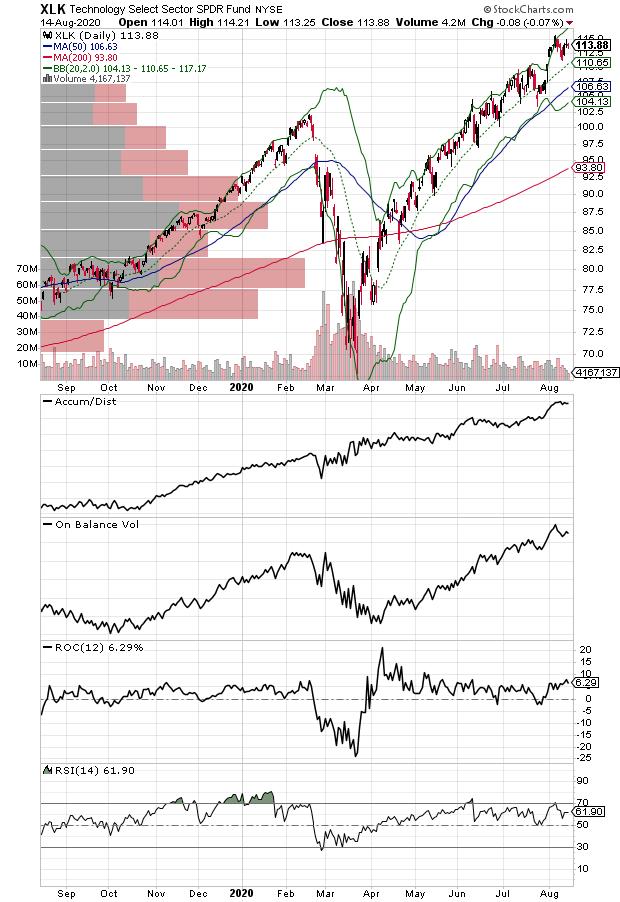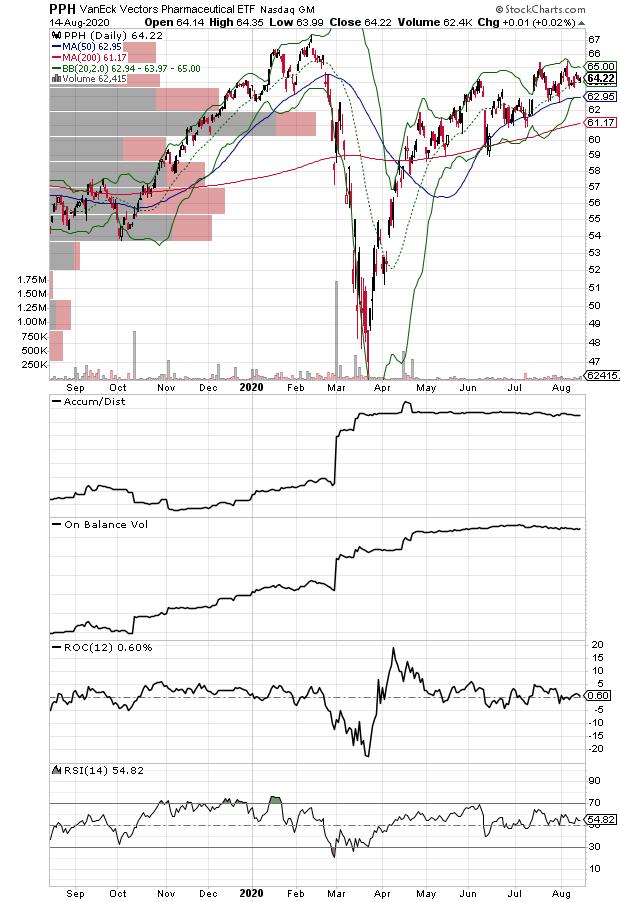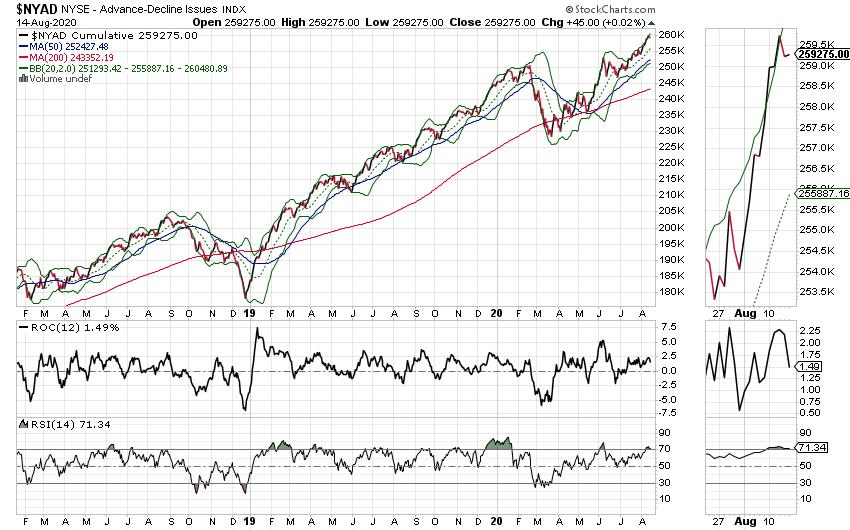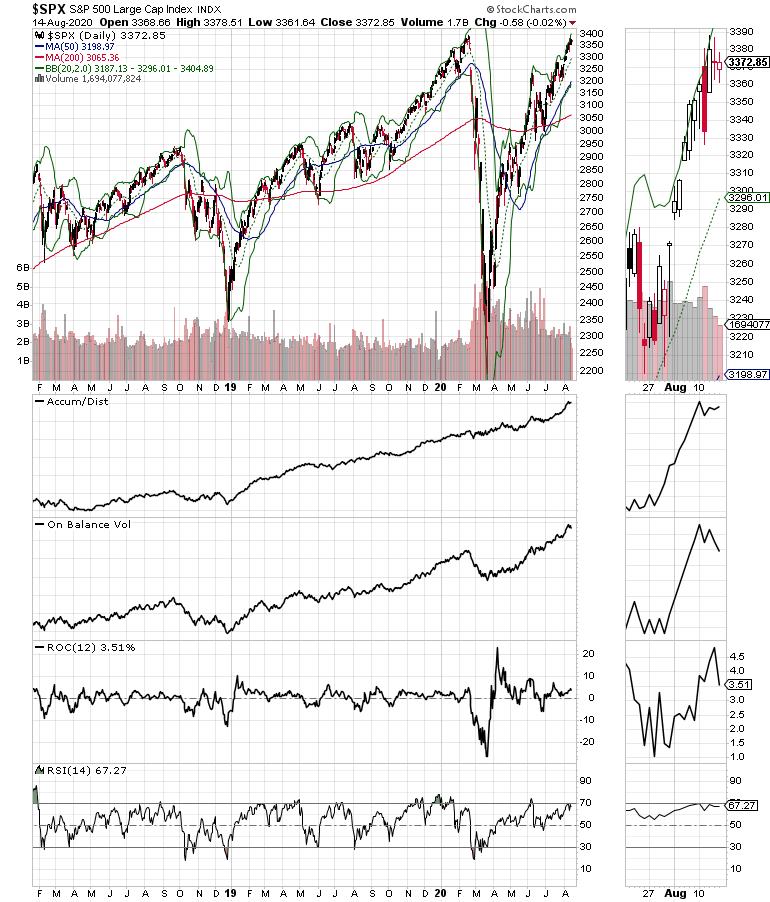The long-term trend for stocks remains up, but shares could experience a short-term correction which, if it materializes, may be worse in the technology sector than other areas of the market. On the bright side, if there is a correction and recent history repeats itself, then, unless the Fed stops its forever-money infusion into the banking sector, investors will once again be given the opportunity (at some point) to buy stocks on the proverbial dip.
If the action in the stock market over the last few days is any sign of what lies ahead, we are clearly in the Dog Days of August, where the prices often consolidate and investors who focus solely on the indexes as an indicator of future price trends can run into a wall of frustration. Fortunately, because the Federal Reserve continues to put money into the banking system, the odds of a lasting meltdown, although never out of the question, seem well below average, a fact that offers the opportunity to find winners if you are willing to put in the work.
Still, because of the potential for falling volumes as traders finally take some time off, the algos are likely to switch their tactics to the short side while lowering the bid-and-ask spread on a regular basis, causing all kinds of problems in the short term.
In a Tricky Market, Look for Relative Strength
Since the market bottomed in March 2020, active investors have had an excellent opportunity to make money as stocks have rebounded aggressively. However, as market valuations have expanded and the uncertainty of the election season and other economy-related factors start to exert their influence on prices, the likelihood of a sideways market or a full blown correction is likely to increase. Of course, in a market run by trading algos and heavily influenced by Fed liquidity, there are no guarantees as to which way things may shake out or how long any pullback may last.
That said, by deploying common sense and sound trading principles, we can still find stocks worth owning during a consolidation. Moreover, if this turns out to be a meaningful top, well-placed sell stops should protect the bulk of recent profits.
So, in order to prepare for any occasion, here are some important steps to take:
- Take at least partial profits on positions which have gained 20% or more
- Expand your research focus beyond your comfort zone
- Stick with strong sectors and stocks
- Trade in small lots
- Look closely at lagging sectors for potential turnaround candidates
- Adjust sell stops to prevent losses beyond 5%
By following these three steps, you will increase the odds of finding potential winners and protecting your recent gains. Here is an example of how to go about it:
Consider the broad technology sector (XLK), a market leader until recently, which of late has been struggling as investors start to look beyond the work-at-home dynamic and the effects of COVID-19 into other areas of the economy which may improve as a result of the Fed's actions and the politics of the moment. If I'm right, this heady advance could well slow or even reverse.

So, when looking to expand your analysis horizons, you have two choices. You can look for sectors which are displaying exceptional strength, or you can look at sectors which are laggards and seem poised to turn up. Because many stocks in strong sectors can be overextended, I focus on areas of the market which have been consolidating and which look set to break out to the upside.
At this time, such a sector may be the large pharmaceutical stocks (PPH). Here is why: Many large drug companies are involved in COVID-19 vaccines. And, although this is important work, COVID-19 vaccines are not likely to be huge money makers for these companies beyond the grants and other funds which they have received from government contracts. Indeed, as investors have recognized this fact, these stocks have rolled over.

But a closer and contrarian look at the PPH charts shows a perfect setup as the ETF has the following characteristics:
- The consolidation has been in place since April, which has shaken out many sellers
- The ETF is trading in the bullish complexity zone (above the 50 and 200 day moving averages)
- The Volume by Price indicator (VBP) shows excellent support at $61 and little resistance immediately above the $65-$66 area
- Accumulation Distribution (ADI) and On Balance Volume (OBV) are neutral
Still, this is not a perfect setup because of the neutral ADI and OBV. But it's good enough to warrant a deeper look at its components. So now that we've spotted a potentially bullish setup the key is to find if there are good stocks in the sector, which I will describe directly below.
Merck Shows Strength as Cancer and Anesthesia Drugs Overshadow COVID-19 Initiatives
Shares of pharmaceutical giant Merck and Company (MRK) seem to be in the early stages of a breakout, bucking the trend of similar companies more reliant on potential COVID-19 vaccines.

Stocks of large pharmaceutical and biotech companies have been disappointing of late as the reality and uncertainty of COVID-19 treatments hits home with investors, which is why the price action in Merck is worth noting. Sure, Merck has some credible entrants in the COVID-19 vaccine race, but those are long shots from a profit standpoint compared to its proven cancer franchise and its potential blockbuster anesthesia reversal drug.
Specifically, Merck owns the lung cancer treatment space with Keytruda, where sales reached nearly $4 billion in the last quarter alone. Moreover, its Lynparza drug is also leading the fight against ovarian and related cancers, giving MRK a credible and advantageous one-two punch in the cancer space in the present while it further enhances and develops its deep cancer pipeline.
Moreover, Merck has a potentially emerging blockbuster drug in Bridion, which could be a nice icing on the profit cake. This is a drug which reverses the induced paralysis required for many surgeries, which it does with fewer side effects compared to previously used agents. Critically, it is especially better than the traditional drugs in respect to the respiratory problems, which could occur in the recovery room due to a return of paralysis if it is not fully reversed. In addition, studies have proven that the higher cost of Bridion is worth the expense, as it reduces risk and costs which would ensue if there were major post-operative complications due to a return of the paralysis in some patients, a fact that will make the drug attractive over time due to improved post-operative safety.
Furthermore, technically speaking, MRK is knocking on the door of what could be a major breakout, with key short-term resistance at $84-$86 and the potential for a move to $90 in the short term. Moreover, ADI and OBV have turned up while raw volume and Volume by Price (VBP) are very favorable. Finally, the company recently gave upbeat guidance for the rest of the year. A move above $90 could take the stock significantly higher.
Incidentally, I own shares in MRK and recently recommended the stock to subscribers of Joe Duarte in the Money Options.com. For a FREE trial subscription to my service, click here.
NYAD Makes New High, But Hits Overbought Territory
The New York Stock Exchange Advance Decline line ($NYAD) made a new high last week, keeping the uptrend for the market in place. At the same time, the indicator has reached overbought territory for the first time since June 2020, having crossed above 70 on RSI. That means that the odds of a sideways period or even a pullback to the 20- or 50-day moving average are on the rise.

However, even though the pullback, if it materializes, could be a bit unnerving, as the algos exaggerate every move in the market, the uptrend should remain intact - unless NYAD breaks decisively below the 50-day moving average and the RSI 50 area simultaneously, triggering a Duarte 50-50 sell signal.

The S&P 500 (SPX) seems to have made a double top, at least for now. Thus, as with NYAD, a move toward the 20-day moving average will be the first likely outcome, with a break below the 50-day average and the 3200 area suggesting that a move to the 200-day average could materialize.

The Nasdaq 100 index (NDX) has also formed a double top, which means that it too is likely to move lower in the short term. Key support will be at 10,500 or so. A break below that, though, could take us down to the $9000 area, which would likely be a fairly unpleasant development even if the index finds support at its 200-day moving average.
Stick with Strength and Protect Your Gains if Market Rolls Over
If there is a correction, as the indicators suggest, the best way to survive it is to focus on strength. That means that, if stocks you own stop working, it's probably a good time to lighten up or sell the shares. On the other hand, corrections are excellent times to look for bargains. Either way, the focus should be on stocks that act better than the market.
Finally, consider that since the 2009 March bottom in stocks, due to the Fed's zero interest rate policy, the robot traders have bought every single meaningful dip in the market just as sentiment had reached its darkest point. In fact, the only two factors that have triggered meaningful declines since 2009 have been higher interest rates and, more recently, the COVID-19 disaster.
What that means is that, if we get another decline and nothing else changes, then, until proven otherwise, get ready to buy the dip.
Joe Duarte
In The Money Options
Joe Duarte is a former money manager, an active trader and a widely recognized independent stock market analyst since 1987. He is author of eight investment books, including the best selling Trading Options for Dummies, rated a TOP Options Book for 2018 by Benzinga.com and now in its third edition, plus The Everything Investing in Your 20s and 30s Book and six other trading books.
The Everything Investing in Your 20s and 30s Book is available at Amazon and Barnes and Noble. It has also been recommended as a Washington Post Color of Money Book of the Month.
To receive Joe's exclusive stock, option, and ETF recommendations, in your mailbox every week visit https://joeduarteinthemoneyoptions.com/secure/order_email.asp.
